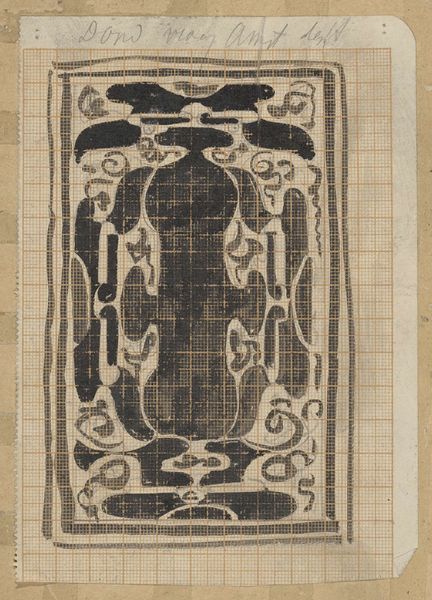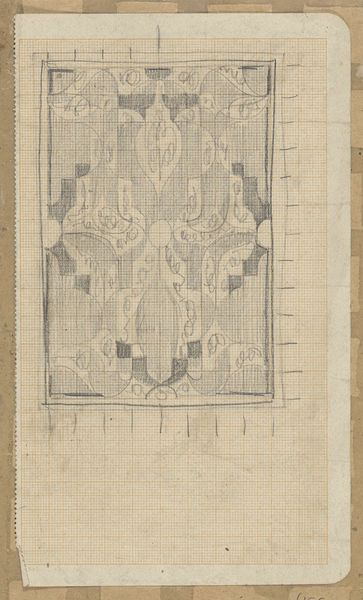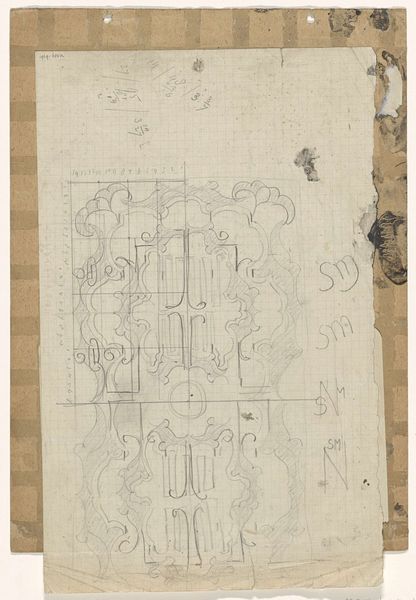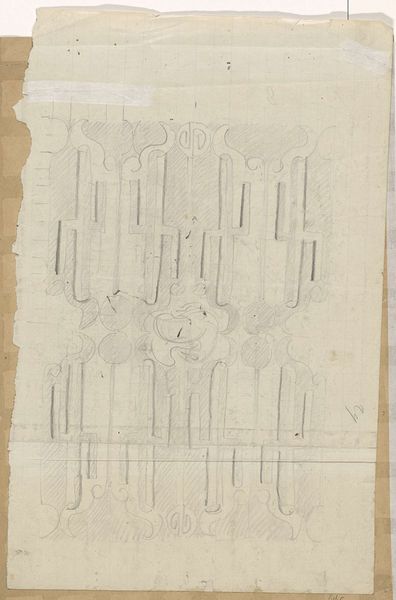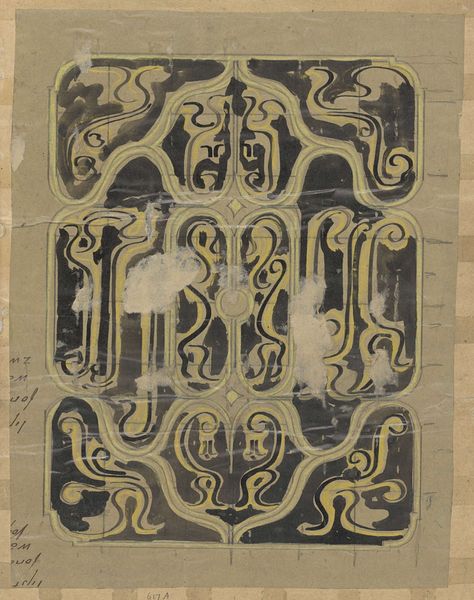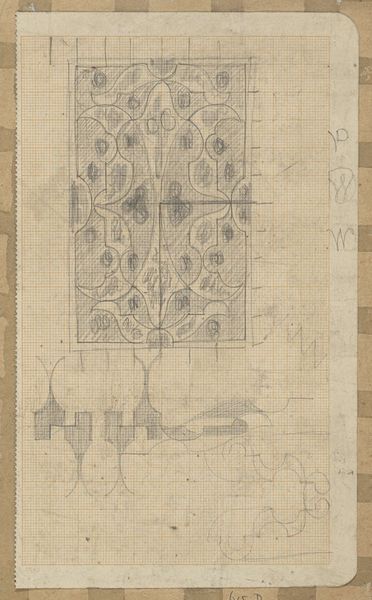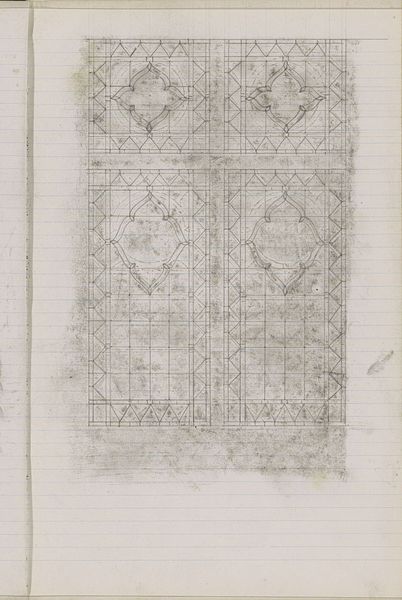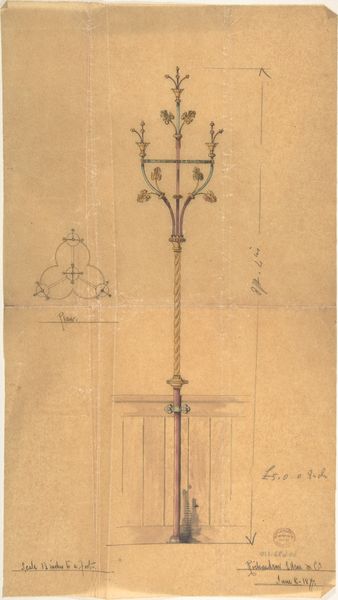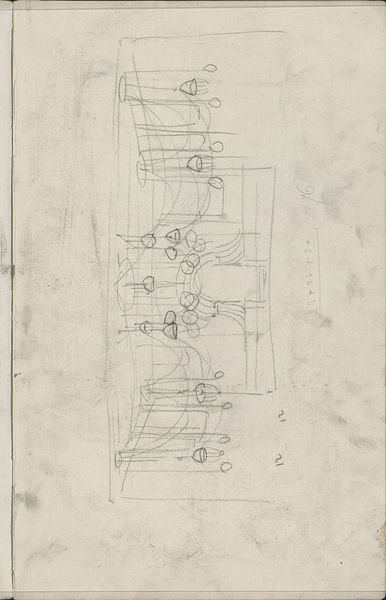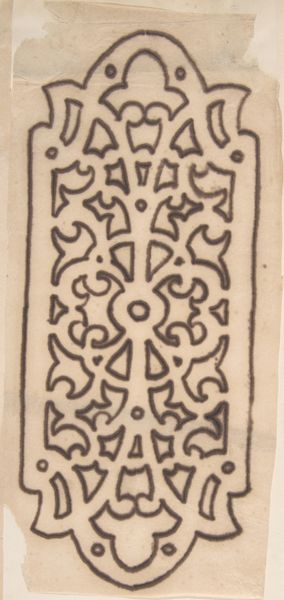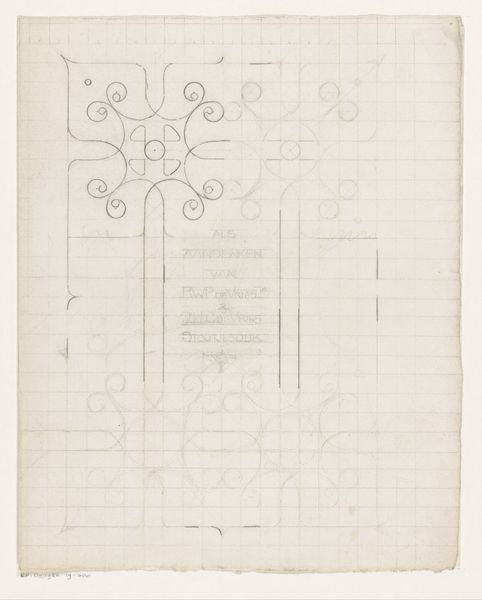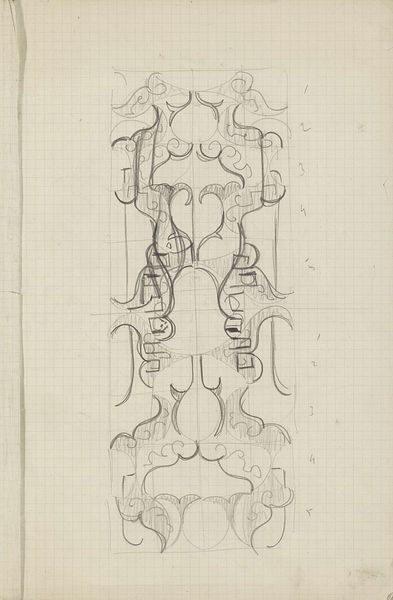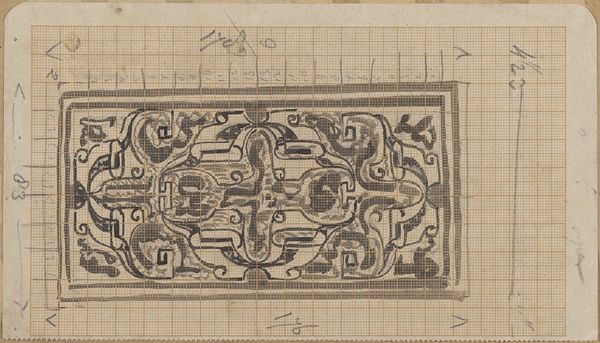
drawing, pencil
#
drawing
#
aged paper
#
art-nouveau
#
hand-lettering
#
old engraving style
#
hand drawn type
#
hand lettering
#
personal sketchbook
#
hand-drawn typeface
#
geometric
#
pencil
#
pen work
#
sketchbook drawing
#
decorative-art
#
sketchbook art
Dimensions: height 167 mm, width 82 mm
Copyright: Rijks Museum: Open Domain
Curator: Take a moment to observe this pencil drawing titled "Decoratief ontwerp" which translates to "Decorative Design," by Carel Adolph Lion Cachet. Though the exact date of its creation remains unknown, it is situated somewhere between 1874 and 1945. What strikes you about it? Editor: Initially, it feels quite structured and symmetrical, but with a somewhat ethereal quality. The pencil lines are delicate, giving it a dreamlike appearance. It looks like a blueprint or a design proposal. Curator: Precisely. Given the materials – pencil on paper, along with the presence of grid lines and hand-lettering—we can infer that this wasn't intended as a final art piece, but as a working draft, likely for a larger decorative project. The Art Nouveau style with these flowing lines indicates the influence of mass-produced decor that permeated consumer culture during this period. Editor: Thinking about this drawing as a preparatory sketch opens up interesting perspectives. Considering its potential application, was it intended for wallpaper, fabric, or perhaps even architectural detail? Also, who was it intended for, what specific consumer demographics? There’s a sense of ordered elegance here, likely aiming to appeal to a burgeoning middle class. Curator: I agree, especially seeing as the labor here points to class. Cachet’s manual creation using accessible materials contrasts with, yet simultaneously seeks to enable mass production through industrial applications. He may be creating work with a utopian spirit for broad consumption but likely only achievable via capitalist processes. Editor: The central lozenge shape provides a focal point but also creates a sort of void or absent center. What impact does this have on the ornamental and decorative work surrounding this space? There's this almost hidden class message there of something that’s supposed to be a marker of beauty in consumer decor. Curator: Good observation. I suspect it reflects how even decorative arts intended for mass enjoyment and accessibility might still inadvertently underscore divisions or even emptiness at the core. The materials reflect the labor conditions needed to sustain an artificial class order based on who has purchasing power. Editor: The drawing definitely provokes a reevaluation of decorative arts as mere aesthetics, prompting discussions around broader cultural and societal narratives inherent in seemingly simple drawings like this. Curator: Absolutely. Cachet’s seemingly straightforward "Decorative Design" holds within its delicate pencil lines a potent intersection of process, production, class, and consumption. A fascinating piece to consider in detail.
Comments
No comments
Be the first to comment and join the conversation on the ultimate creative platform.
